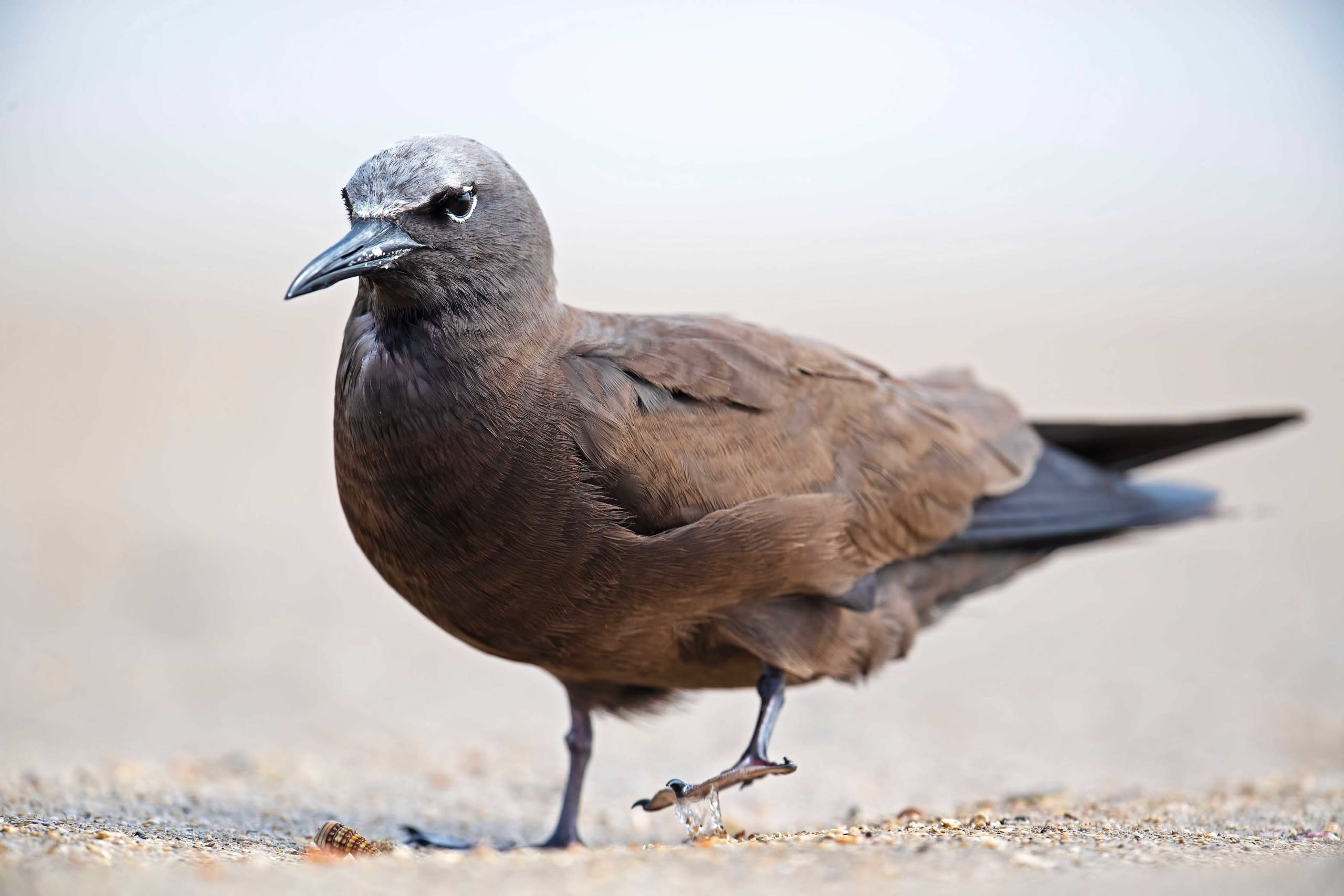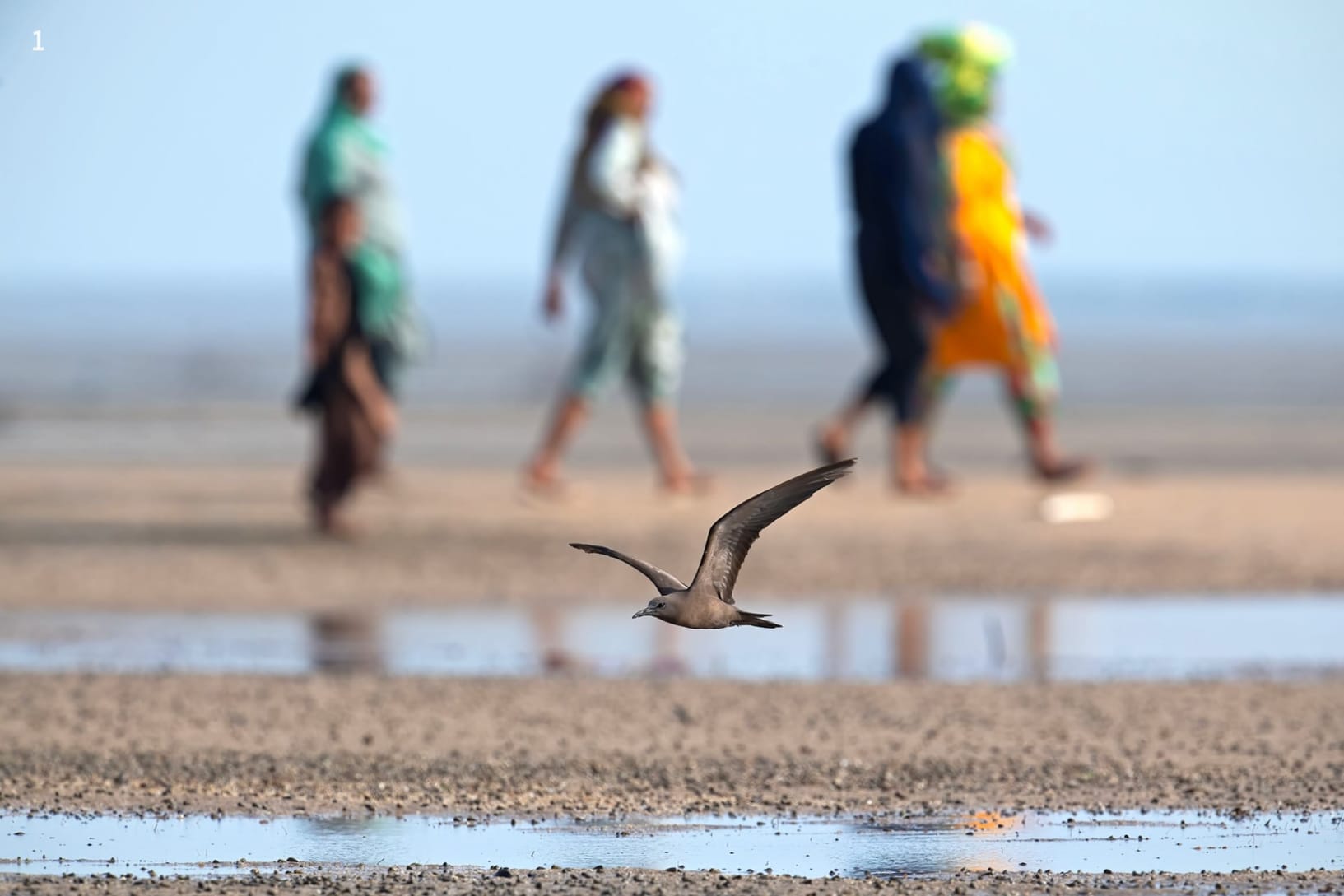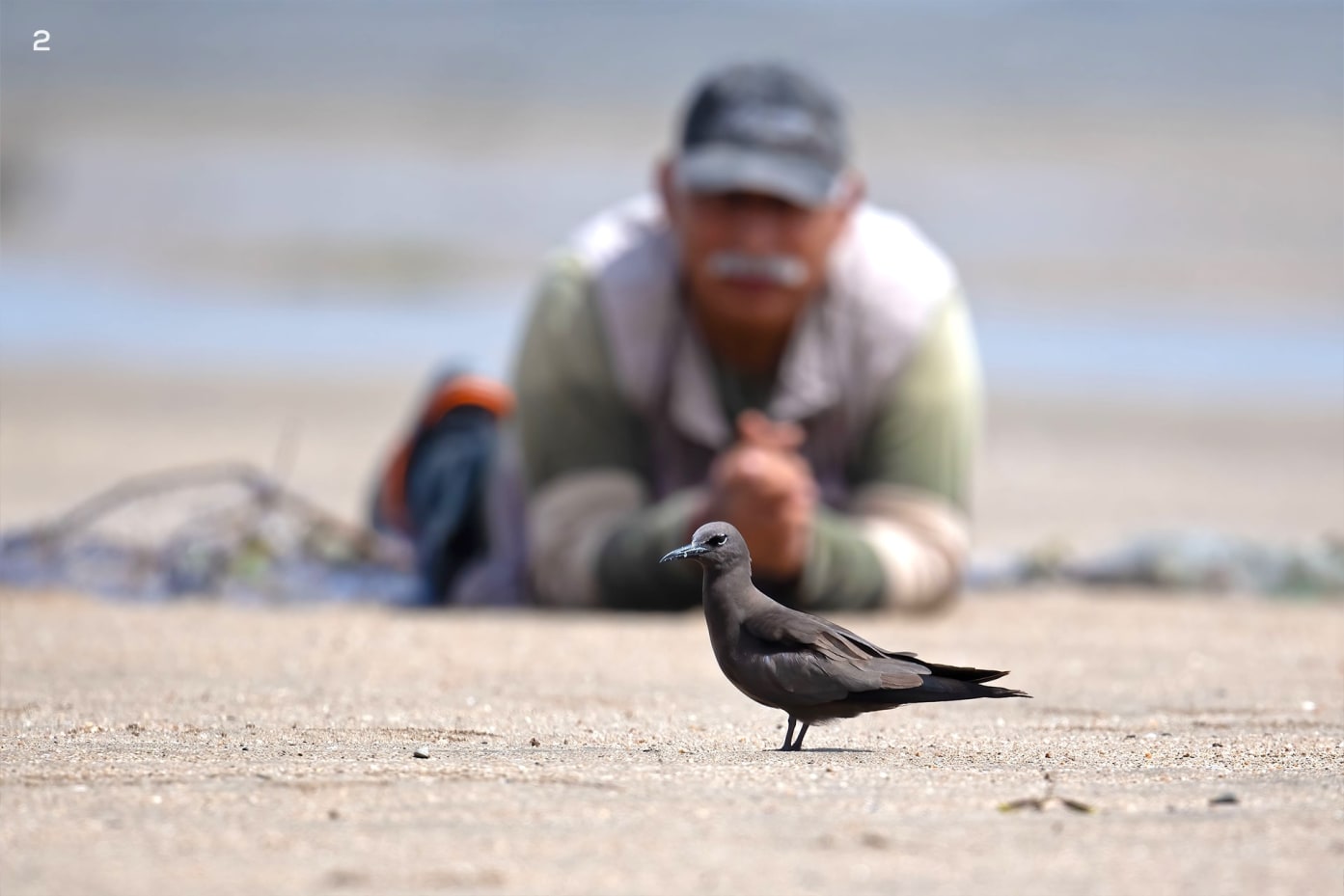 Listen to this article
•
15:34 min
Listen to this article
•
15:34 min
In June 2023, Cyclone Biparjoy hit western Gujarat’s coastal areas, leaving it in chaos. But as often happens, nature’s resilience came to the forefront. In the realm of the unpredictable, there was a pleasant surprise waiting for bird enthusiasts. The storm’s aftermath provided a unique opportunity to glimpse the world of pelagic (marine) birds that the coastal region harbours temporarily. This time, it was brown noddies.
The brown noddy (Anous stolidus) is a dark-bodied tern of the tropical seas. Being a purely pelagic bird, it has never been observed along Gujarat’s coast previously. The cyclone’s impact on coastal ecosystems prompted a surge in sightings of pelagic birds. After the devastating effects of the cyclone and areas were open to public movement, birders started searching for pelagics in coastal areas and reported seeing brown noddies on the Porbandar coast and the Nalsarovar Bird Sanctuary.
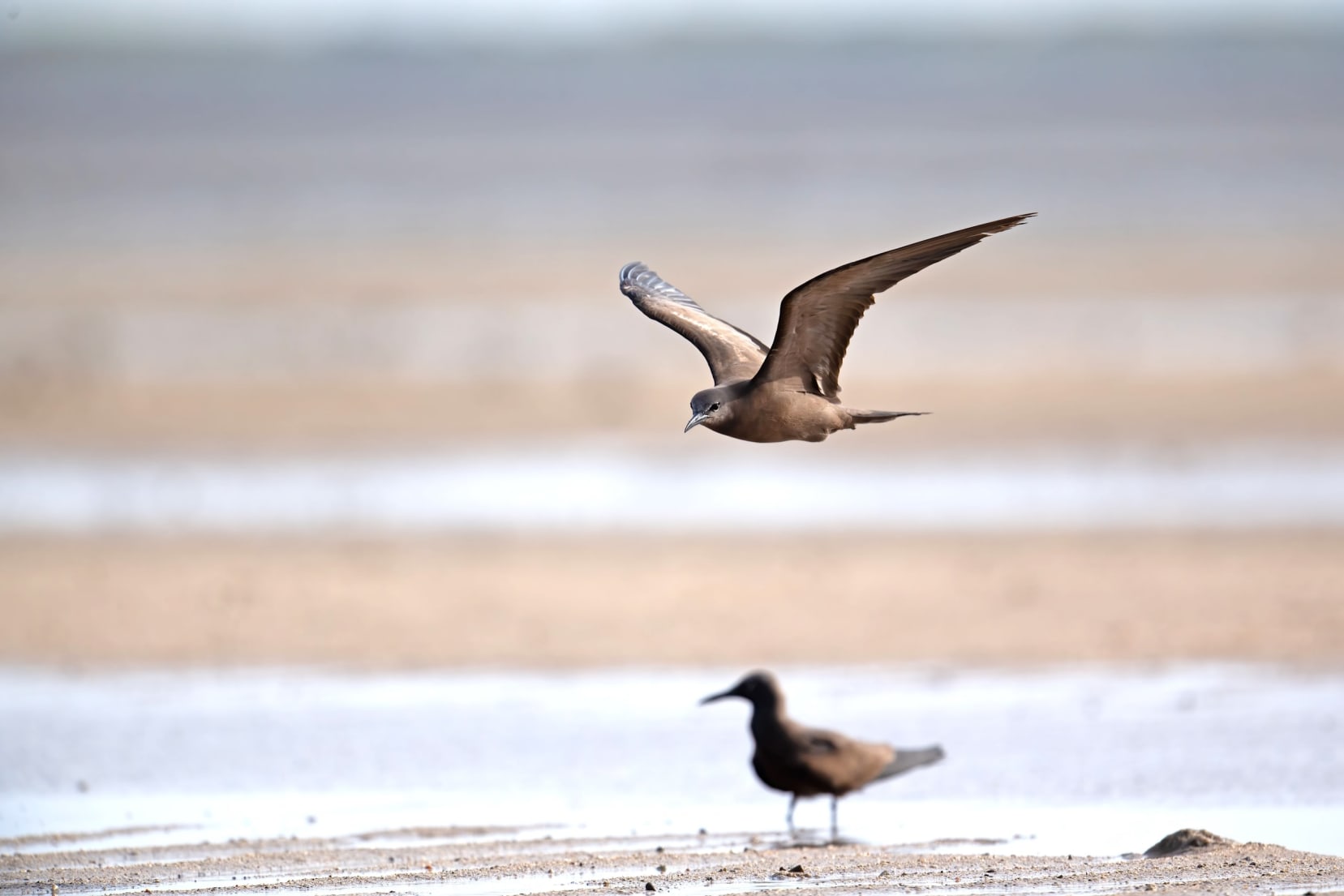
On the afternoon of 18th June 2023, a couple of birders from Jamnagar observed brown noddies at the coastal village of Balachadi. They shared this news, and the following morning, we were fortunate to spot a couple of these exquisite birds during low tide. Bold and beguiling, carefree yet calm truly encapsulates their demeanour. The noddies seemed unfazed by our presence, even allowing a group of photographers up close. At times, they took flight, darted for food, and landed back within the proximity of our telephoto lenses. This accommodating behaviour allowed us to capture them in various settings, from close shots to wide-angle views. Their comfort in our presence was a truly overwhelming experience. It is a rare moment in nature when purely wild subjects generously share their world with you.
I am part of a few like-minded birders who have been exploring the pelagic avifauna of Gujarat since 2015. We go on numerous exploratory excursions. During these trips, we typically observe pelagic birds in flight or resting on ocean debris, such as plastic bottles, polystyrene waste, or wooden planks. However, the sighting of brown noddies had always eluded us on such offshore trips, so witnessing this pelagic species on the seashore for hours was a transcendent experience.
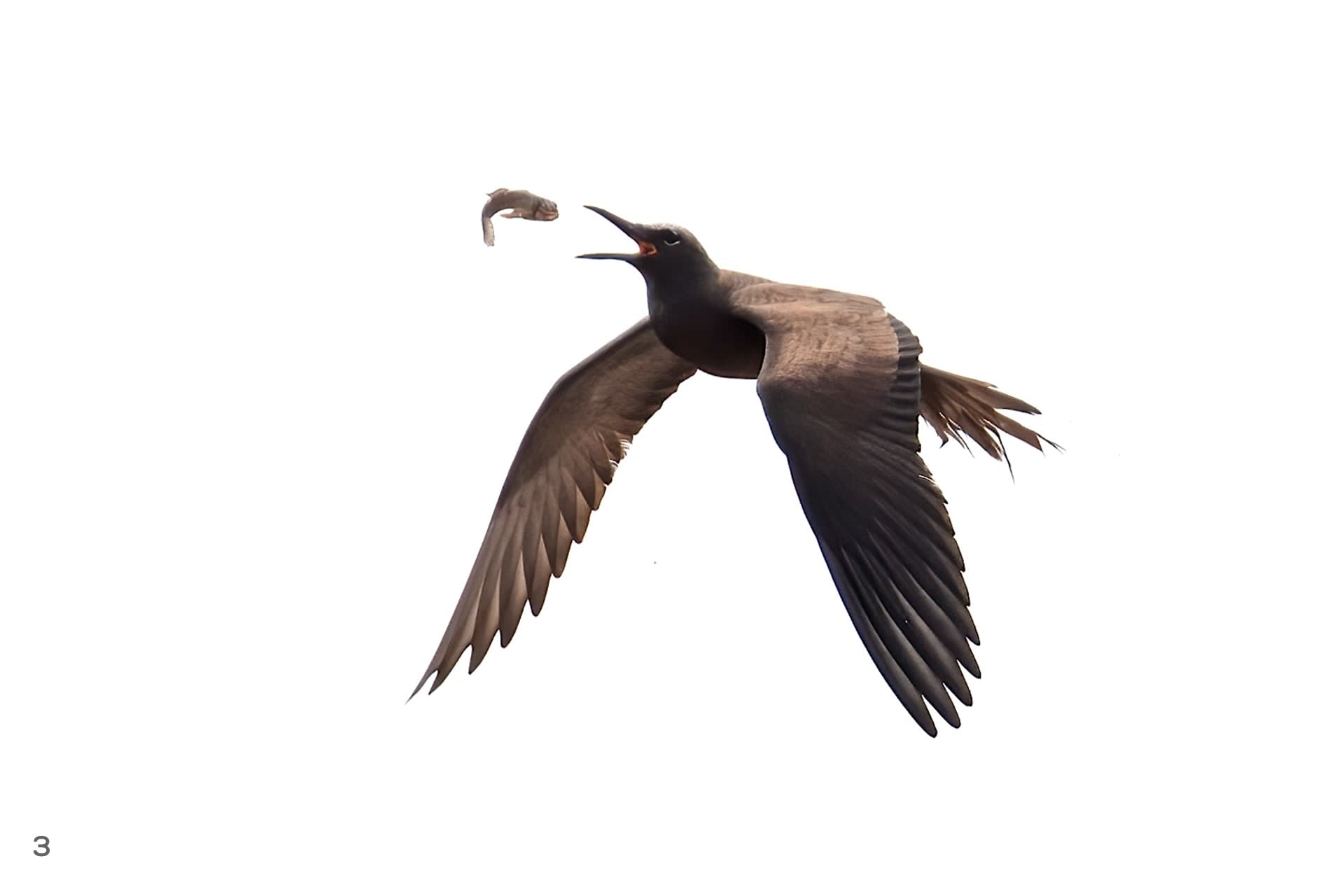
I did not have any expectations of studying any of the intricate behaviour of these noddies, given that this was not their typical habitat. It seemed likely that their stay on this shore was impermanent, focused on foraging for survival. But as always, the extraordinary often requires patience. Behavioural documentation becomes easier when a subject is tolerant and not overly sensitive to human presence. So, even during the short stay of the noddies, I was able to document some of their interesting feeding behaviours.
During high tide, the brown noddies would hunt along the shoreline in shallow waters. They’d hover slightly above the water’s surface before swiftly swooping down to snatch their prey. While they successfully caught fish in most attempts, they didn’t plunge into the water for food. After a few rounds of hunting, they’d rest on the beach slopes, seemingly waiting for the water to recede.
During low tide, the birds shifted to the intertidal habitat and stayed there. They would slouch on dry, marginally elevated sandbars, resting on their bellies or standing on their webbed feet for extended periods. Suddenly, one of them would take a sortie, probably when hungry and fly away a few hundred metres to scan the wet pools formed by the receding water. Interestingly, these puddles were mudskipper hotspots.
The noddies ingeniously took advantage of the situation here. After inspecting the area from a few metres above, they’d descend, flying low over the puddles. This startled the mudskippers, prompting them to scurry back to their burrows. Those close to their burrows would swiftly crawl and retreat to safety, but some would leap in the air to gain distance and evade the nimble hunters. Once locked onto a target, the noddies flew extremely low over the surface to grab the prey mid-air or as it just alighted. If needed, they would walk a few steps with extended necks to reach for the tail of the fleeing prey. A few agile mudskippers managed to evade capture momentarily by fluttering but eventually succumbed to the predator.
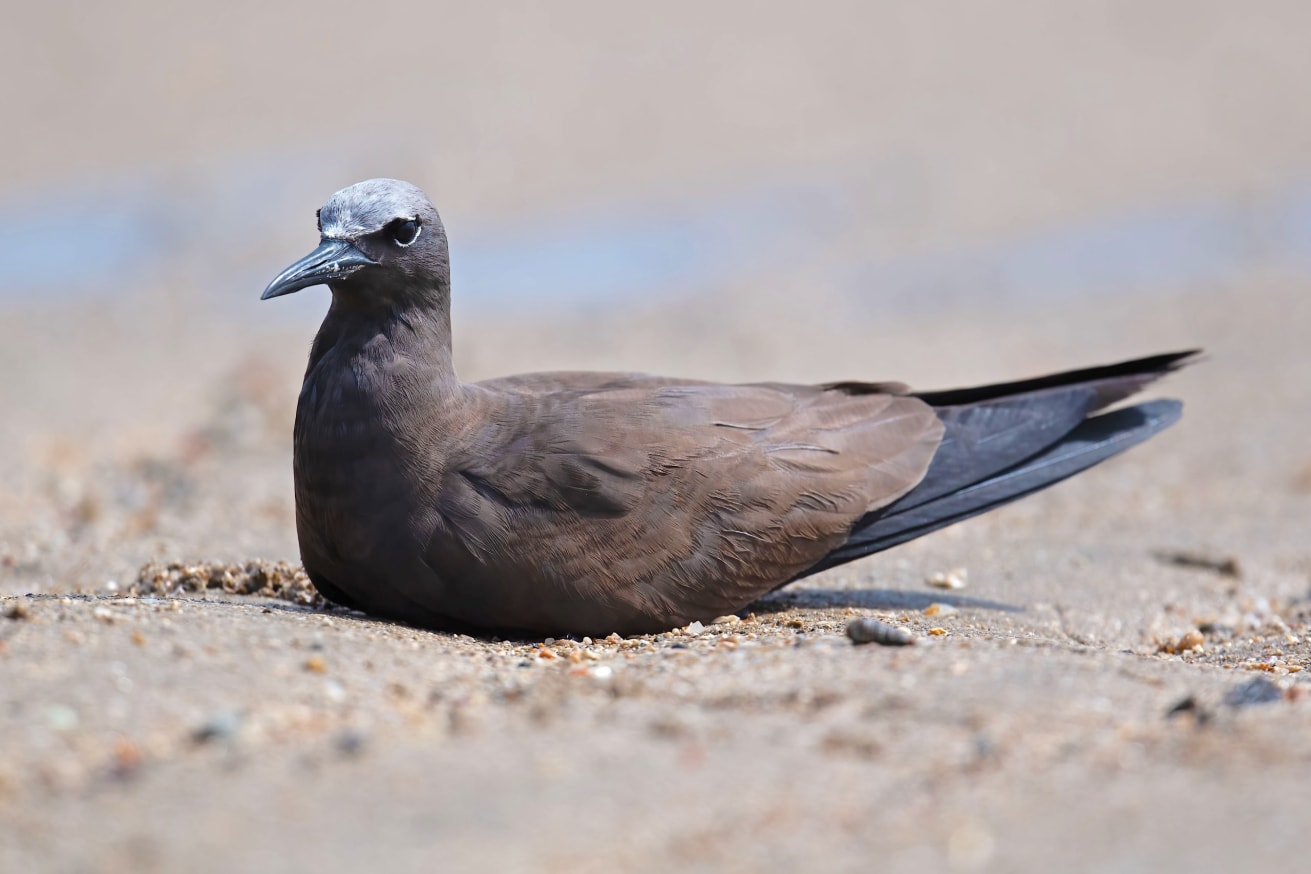
On catching the prey, the noddy devoured the mudskipper instantly, occasionally subduing it with the pointed beak to ensure it didn’t escape. We also observed that on the odd occasion, a noddy carried a mudskipper into the air. On a few occasions, the noddy even flung the mudskipper high into the air to catch it again and swallow it. This might have been because its grip on the prey was tenuous, and it tossed it in the air to reposition it, catch it again, and then gobble it.
The feeding behaviour of brown noddies observed at the Jamnagar coast in the Gulf of Kutch provides valuable insights into their adaptability and survival strategies during transient visits following a cyclonic event. The species exhibited a flexible response to changing environmental conditions, showcasing their ability to exploit available food resources. This can be considered atypical for a pelagic bird. I conclude with a couple of questions that aroused my curiosity. Was this a provisional response for survival by brown noddies or their instinct? Does the bird show pliability in adapting to altered conditions during a short stay? These questions open the door to further research, promising more revelations about these enigmatic birds.



